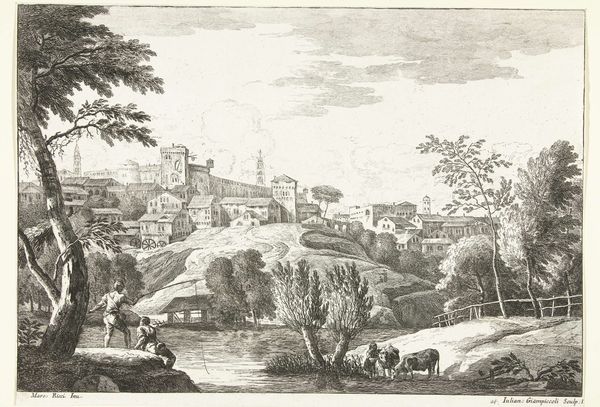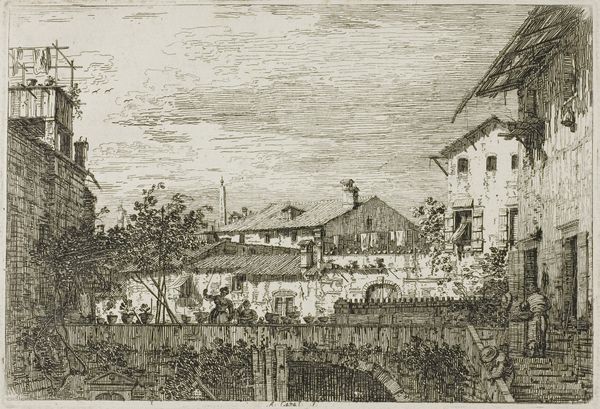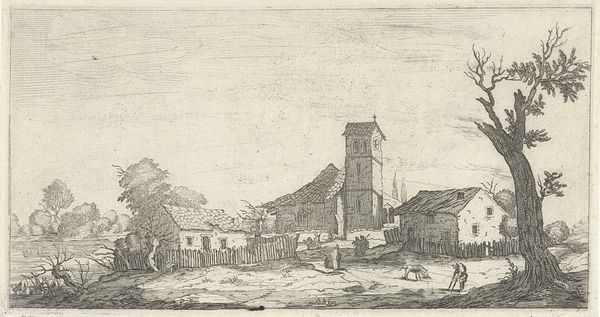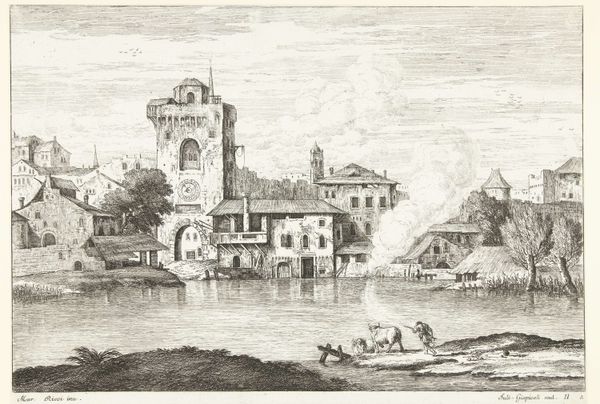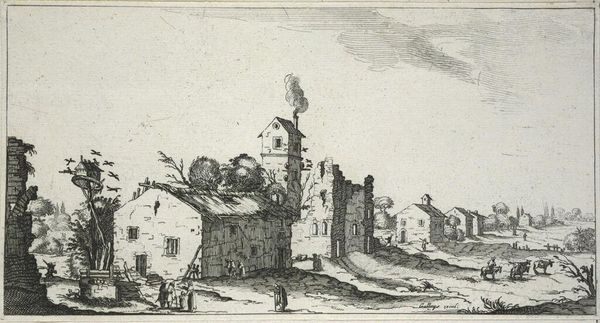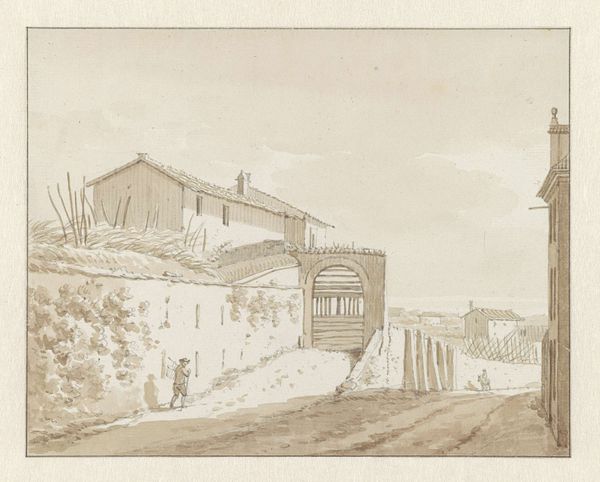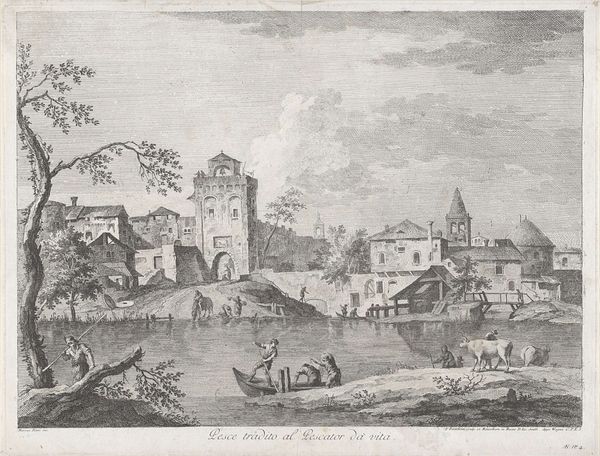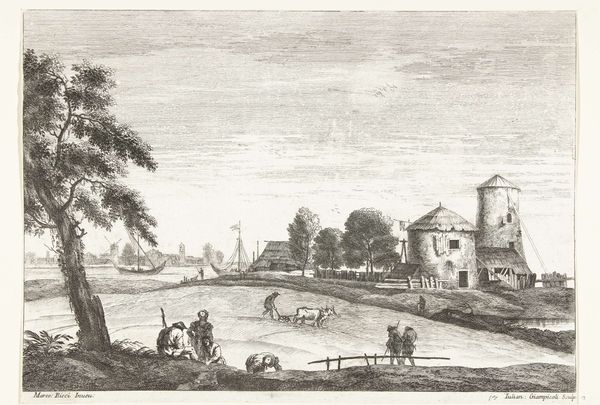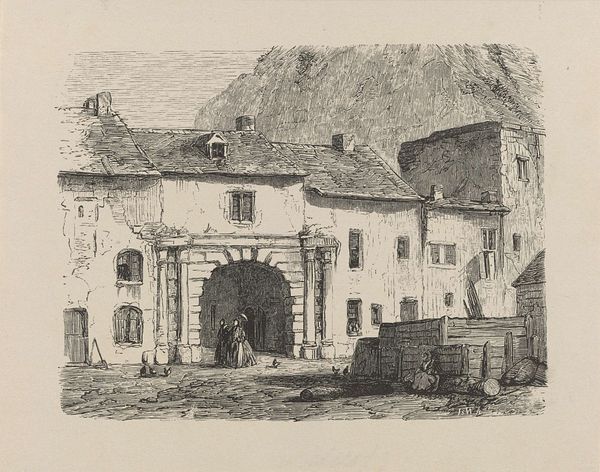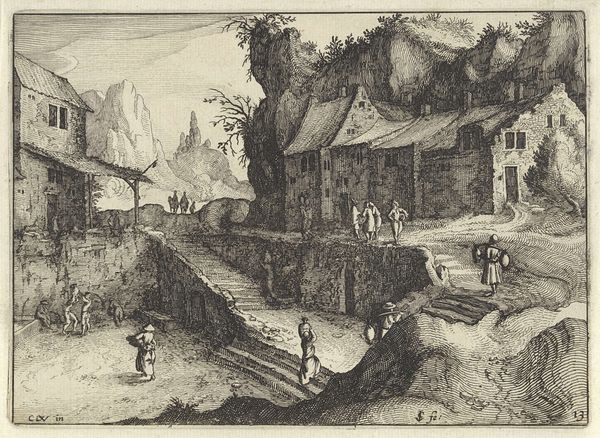
print, engraving
#
baroque
# print
#
landscape
#
figuration
#
line
#
cityscape
#
engraving
#
realism
Dimensions: height 248 mm, width 353 mm
Copyright: Rijks Museum: Open Domain
Editor: Here we have Giuliano Giampiccoli's "Huis met toren aan water," created around 1739 or 1740. It’s an engraving and, honestly, it feels very industrious. The detail is incredible; you can practically hear the sounds of the workers and the water. What aspects stand out to you? Curator: I'm immediately drawn to the tangible aspects of its production. Look at the lines – consider the sheer labor invested in creating such intricate details through engraving. The materials used – the paper, the ink, the metal plate – all point to a specific mode of artistic production tied to its time. How might the act of printing multiple copies impact the art world, allowing for a wider consumption and accessibility of imagery beyond unique paintings? Editor: That's fascinating! I hadn't thought about the mass production aspect. So, it’s not just about the image itself, but about how that image was made and distributed? Curator: Precisely. We must look at who had access to such prints, the workshops that employed artisans, and the societal function it served. Was it purely decorative? Did it function as a record of specific architecture, impacting the way people saw and interacted with their surroundings? What sort of labor did it require? Editor: It feels like there’s almost a romanticization of labor, though maybe that's my 21st-century perspective creeping in. Curator: Maybe, or maybe Giampiccoli is documenting and celebrating the physical exertion inherent in daily existence. Either way, he reminds us about those who toiled in Venetian commerce. What do you suppose a print like this might cost back then? Was art for everyone, or just the elite? Editor: It completely changes how I see this piece. It’s no longer just a pretty cityscape, but a document reflecting social structures. Curator: Exactly! By looking at the materials, the making, and the context of its creation, we unravel a much richer understanding. It invites us to look beyond aesthetics, asking bigger questions about value and the world it reflected.
Comments
No comments
Be the first to comment and join the conversation on the ultimate creative platform.

